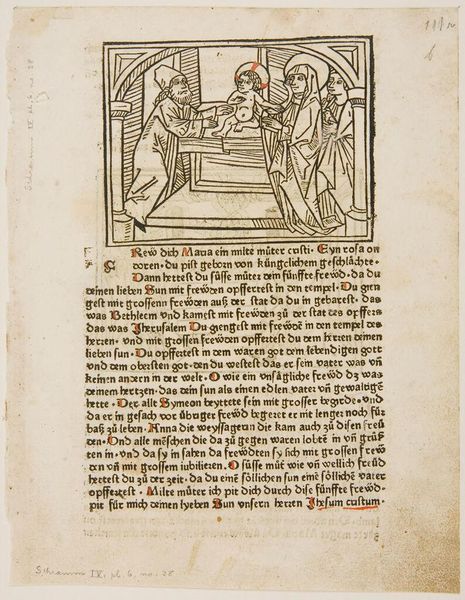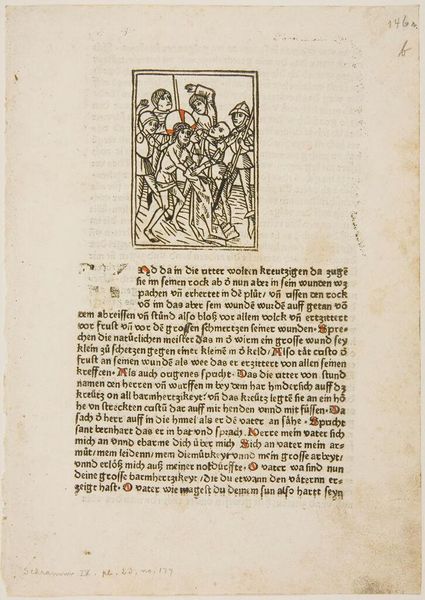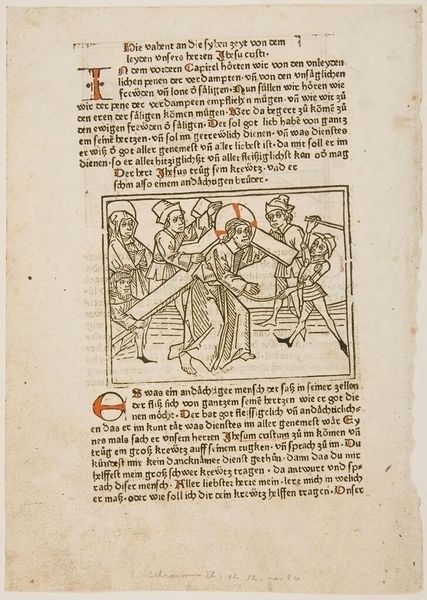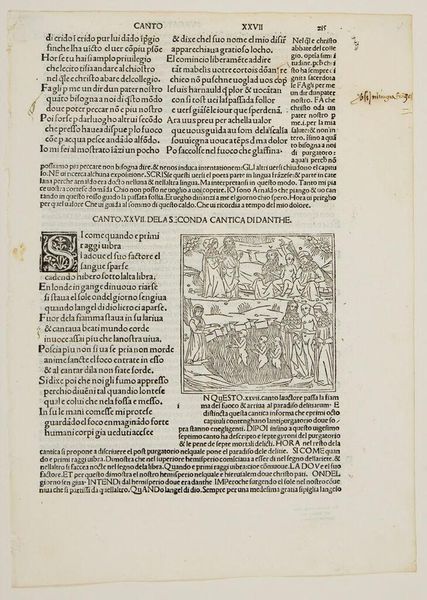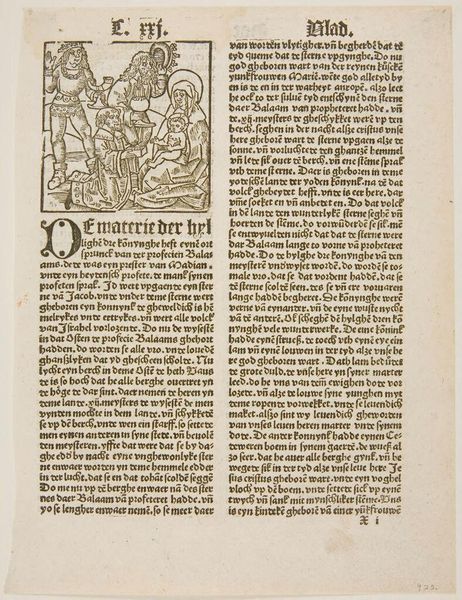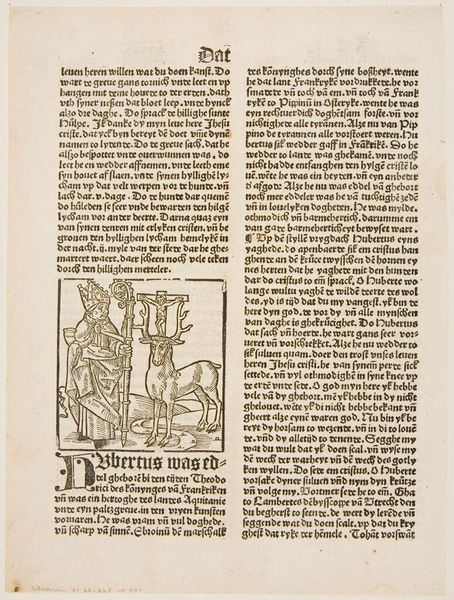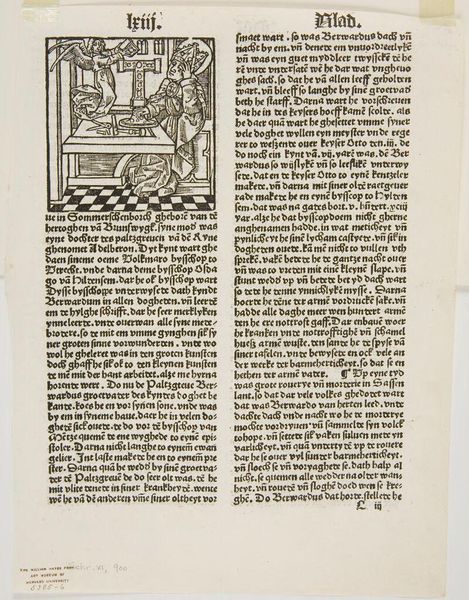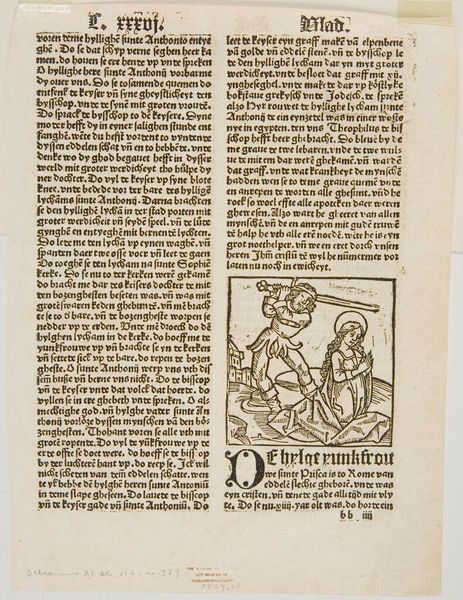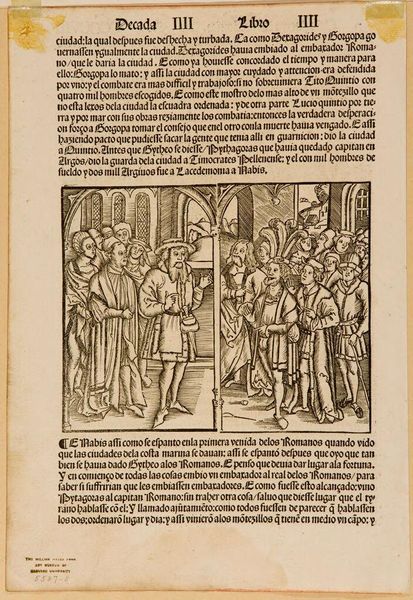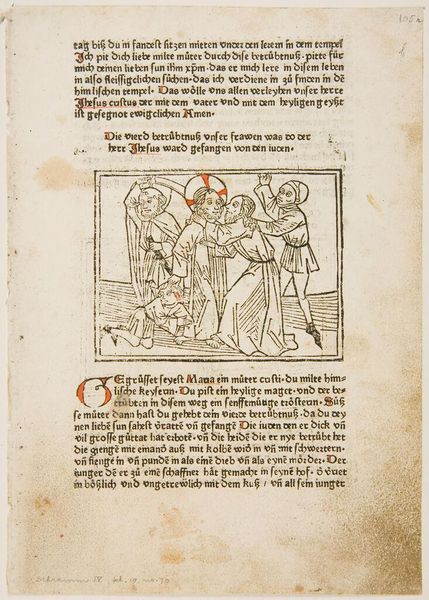
Waltherus Restores Griseldis as His Wife, Illustration from Petrarch, Griseldis. Ulm, Johann Zainer, c. 1473 c. 15th century
0:00
0:00
Copyright: CC0 1.0
Curator: This woodcut, titled "Waltherus Restores Griseldis as His Wife," originates from Johann Zainer's printing of Petrarch's "Griseldis" around 1473. It’s currently held in the Harvard Art Museums collection. Editor: My first impression is of stark simplicity; the linear quality creates a stage-like space. The lack of color focuses my attention on the composition itself and its graphic clarity. Curator: The scene depicts Waltherus, who has tested Griseldis's obedience, finally restoring her status. The figures within are archetypal, representing fidelity and social order. The garments, though simply rendered, communicate social status. Editor: Yes, the strict linearity and the minimal shading underscore a sense of formality, almost a theatrical presentation of virtue. Semiotically, the table and simple meal hint at domesticity, a key aspect of Griseldis's role. Curator: The woodcut served a didactic purpose, reinforcing societal expectations around female submission and the husband's authority. The story itself, and this visual representation, was meant to be instructive. Editor: Ultimately, the power lies in the raw, unadorned style, stripping the narrative to its barest symbolic elements—a powerful commentary on the structure of power. Curator: Indeed, it’s a potent image that continues to resonate across centuries.
Comments
No comments
Be the first to comment and join the conversation on the ultimate creative platform.
